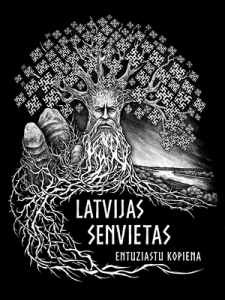A gently sloping hill, the name of which testifies about a probable ancient cult site — a sacrificial hill. Although there is also an opinion that the name originates from the oaks that used to grow on it and it has transformed from the Russian word “dub” (‘oak’). For the first time the Dupurkalns Hill was described by a local researcher T. Dzintarkalns in 1924. Several times hypotheses were made that it could also have been even a hill fort. No traces of a cultural layer and convincing ground works (transformation works) have been found.
There is no archaeological evidence about the site as an ancient cult site. There are a few short in content and traditional tales narrating that a castle had sunk into the hill. The hill supplements the number of cultural-historical places of Valdemārpils and its surroundings as a legendary place, the significance of which in the past should be yet studied.
By the hill, probably, the surface had been levelled flat. But none of the hills have real evidence about the existence of a hill fort. The hill fort researcher E. Brastiņš in 1920 did not recognize any of the hills as a hill fort.


